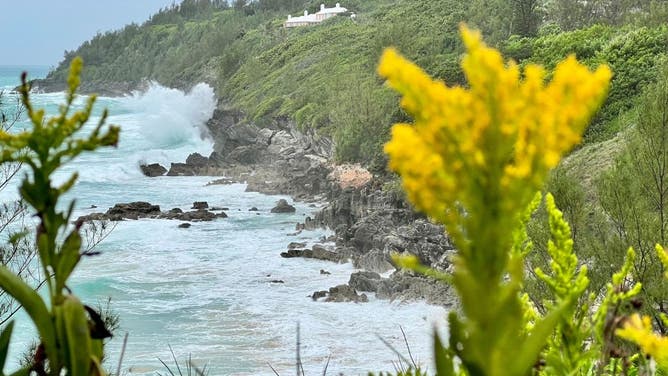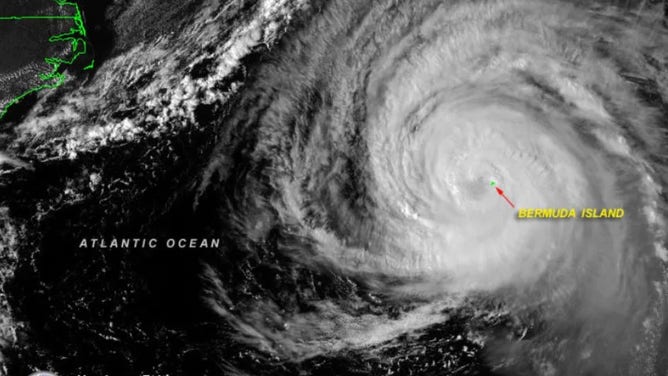Why Bermuda is among the most hurricane-resilient areas
Since reliable data started to be kept by meteorologists in the 1800s, 90 cyclones have passed within 50 miles or less away from archipelago. Hurricane Fiona passed the territory as a major hurricane in 2022 but only resulted in minimal damage. Hurricane Fabian of 2003 is the only cyclone in recent memory to result in deaths in the territory. The Category 3 storm caused an estimated $300 million in damage.
Specialty designed roofs help Bermuda residents cope with storms
Strict building codes in Bermuda allow the island to come out of the major systems rather unscathed. A look at how roofs play a major role in construction.
A small British territory in the western Atlantic may seem like the last place that is prepared for massive storms, but it just may be the most resilient community in the basin, if not the entire world.
Every year, the archipelago, which is made up of more than 180 islands, is brushed by a tropical cyclone, with significant impacts occurring once or twice every decade.
Since reliable data started to be kept by meteorologists in the 1800s, 90 cyclones have passed within 50 miles or less of Bermuda.
This figure includes nearly a dozen hurricane landfalls that have occurred on the territory’s only 21 square miles of land.
Despite their strength, most hurricanes cause minimal damage, which is a testament to the territory’s topography, preparation and strict building codes.

Tracks of tropical storms and hurricanes that have passed within 50 miles or less from Bermuda.
(NOAA)
7 FACTS TO KNOW ABOUT HURRICANES
Hurricane Fiona bypassed the territory as a major hurricane in 2022 but only resulted in minimal damage.
Hurricane-force wind gusts caused thousands to lose power, but electricity was quickly restored by utility crews once conditions were considered safe to venture out in.
During the early 20th century, Bermuda experienced a string of powerful hurricanes, which resulted in strict building standards.
Most buildings on the islands are said to be made of stone and able to withstand winds that reach at least 100 mph.
Roofs are designed to not only protect structures from wind gusts but also collect rainwater that residents and tourists use year-round for drinking and other activities.
Additionally, Bermuda’s surrounding water makes it less susceptible to storm surge.
The combination of the deep ocean waters, coral reefs and rocky shores helps to disperse wave activity that would otherwise be detrimental to coastal communities.

Waves hit te rocks in Church Bay, Bermuda, as Hurricane Fiona churned towards the Atlantic island as a powerful Category 4 storm on September 22, 2022. - Hurricane Fiona churned toward Bermuda as a powerful Category 4 storm on Wednesday as Puerto Rico struggled to restore power and water after receiving a crushing blow.
(Photo by SEBASTIEN VUAGNAT/AFP via Getty Images / Getty Images)
DRONE VIDEO SHOWS 50-FOOT WAVES AND DESTRUCTIVE WINDS IN THE HEART OF HURRICANE FIONA
Hurricane Fabian caused most significant damage to lives and property in recent memory
The impacts of Hurricane Fabian in 2003 stand out as being one of the worst disasters to impact the territory in recent memory.
The Category 3 hurricane came within 50 miles of the western side of Bermuda, causing sustained winds to reach 117 mph, with gusts of at least 130 mph.
Damage at the time was estimated to be around $300 million, and four people were killed as a result of the storm surge.

Hurricane Fabian impacts Bermuda in 2003
(NOAA)
According to the U.S. State Department, the Cape Verde hurricane caused significant damage to the tourism industry, for which it took years to fully recover.
Despite frequently being in the forecast cone for tropical systems, Fabian remains the only cyclone in the modern satellite era to cause fatalities in the British territory.
